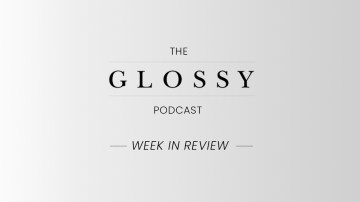Tapestry Inc.’s attempted $8.5 billion acquisition of Capri Holdings heads to a federal court trial on Monday after facing opposition. For those in the fashion industry, the outcome is set to be impactful.
Announced in August 2023, the deal, which would create one of the world’s largest luxury fashion houses, hit a regulatory roadblock in April this year as the Federal Trade Commission moved to block the merger, citing antitrust concerns. If successful, the acquisition would combine Tapestry’s brand portfolio of Coach, Kate Spade and Stuart Weitzman with Capri’s roster of Michael Kors, Versace and Jimmy Choo, creating a U.S. powerhouse in a space typically dominated by European brands. Whether the deal is blocked or approved, the implications stand to send ripples through the luxury fashion industry.
The FTC’s competition concerns
The FTC has raised concerns about how the merger could impact competition in the “accessible luxury” handbag market, which encompasses brands like Michael Kors and Coach, as well as others like Rebecca Minkoff and Longchamp.
According to Jennifer Lada, a fashion attorney at New York law office Holland & Knight who is following the case, “The FTC investigated the proposed acquisition and determined that, if Tapestry purchased Capri, it would give Tapestry a dominant share in the accessible luxury handbag market, which would in turn, according to the FTC, allow it to raise the price of handbags and potentially also allow Tapestry to reduce wages of employees who work in that space.”
This led the FTC to vote in favor of filing a lawsuit in federal court in April, seeking a preliminary injunction to temporarily block the deal until after a full trial. Starting Monday, the court will begin hearing evidence from both sides.
What’s behind the scrutiny
Mergers between fashion giants often face scrutiny. They’ve included LVMH’s $16.2 billion acquisition of Tiffany & Co. in 2020, Essilor’s $49 billion merger with Luxottica in 2018, Michael Kors’s $2.1 billion purchase of Versace in 2018, Kering’s purchase of Gucci in 1999 and Prada’s acquisition of Jil Sander in 1999. These deals were closely examined by regulators to address concerns about reduced competition and market consolidation within the luxury fashion industry.
According to Lada, the Tapestry-Capri deal isn’t being examined any more closely than others. “The DOJ and FTC look pretty carefully at all mergers between competitors for potential harm to competition,” she said.
In their opposition to the FTC’s case, filed in August, Tapestry and Capri Holdings argue that the plaintiff has failed to clearly define the “accessible luxury handbag” market, which is central to the case. They assert, “On the eve of trial, Plaintiff and its expert still cannot align on what an ‘accessible luxury handbag’ is. … Because Plaintiff’s market lacks discernable parameters, there are not clear answers to these basic questions.” Tapestry also dismissed claims of anti-competitive behavior, arguing, “Plaintiff’s market shares are also not indicative of an antitrust issue. … Tapestry has no incentive or plans to merge the brands, share pricing information or limit innovation.”
What happens if the deal is blocked?
If the court sides with the FTC and grants the preliminary injunction, it would delay — if not completely kill —the acquisition. “For the court to grant a preliminary injunction here in favor of the FTC, It would have to find that there exists sufficient evidence that the FTC has a ‘likelihood of ultimate success’ in proving at trial that the acquisition would lead to competition in the ‘accessible luxury handbag market’ being substantially lessened,” said Lada.
Tapestry and Capri Holdings have argued that delaying the deal would harm consumers more than it helps. According to the briefing filed in August this year by Tapestry and Capri, “Because of the lengthy time required to go through the administrative litigation process, granting an injunction will necessarily kill the deal, robbing consumers of the pro-competitive advantages resulting from this merger.” The companies insist that the merger would benefit consumers, particularly through the restoration of the Michael Kors brand, which has struggled in recent years.
Tapestry believes the acquisition will “restore the brand’s health, improve the value of Michael Kors handbags, and re-engage Michael Kors consumers to give them the Michael Kors handbags they want,” Lada said.
What if the deal goes through?
If the acquisition is approved, it would establish one of the largest luxury fashion houses in the world, strengthening the U.S.’s positioning in a market traditionally dominated by European conglomerates.
As of recent years, LVMH has generated nearly 47% of its $53 billion revenue from its fashion and leather goods division, which includes luxury accessories like handbags, according to research company Coresight Research. Kering remains a strong competitor with major brands including Gucci, Saint Laurent and Balenciaga contributing to its over $15 billion in revenue. Both LVMH and Kering have solidified their positions through similar mergers and acquisitions over the years, building multi-brand portfolios granting them market dominance
“The [Tapstry-Capri deal] is an $8.5 billion acquisition,” said Lada. “This is not minimal and would allow the companies to become one of the largest luxury houses in the world.”
By joining forces, Tapestry and Capri would not only have a stronger presence in the accessible luxury market, but they could also compete more effectively with their European counterparts in the global luxury fashion space.
Speaking with Glossy in December of 2023, Tapestry CEO Joanne C. Crevoiserat called the “complementarity” of Tapestry’s and Capri’s business models a “huge advantage” to both. Through Capri, Tapestry would gain customer reach, including in Europe and among the “attractive” higher-level luxury segment, she said. Tapestry could also tap Capri’s capabilities in lifestyle categories, which its Coach and Kate Spade businesses see as growth opportunities. Tapestry, meanwhile, has a comparatively stronger presence in Asia and higher sales penetration in direct sales channels, which are set to benefit Capri.
The combined company could leverage economies of scale, increasing its brands’ abilities to innovate, streamline operations, and potentially offer improved pricing and product offerings to consumers.




